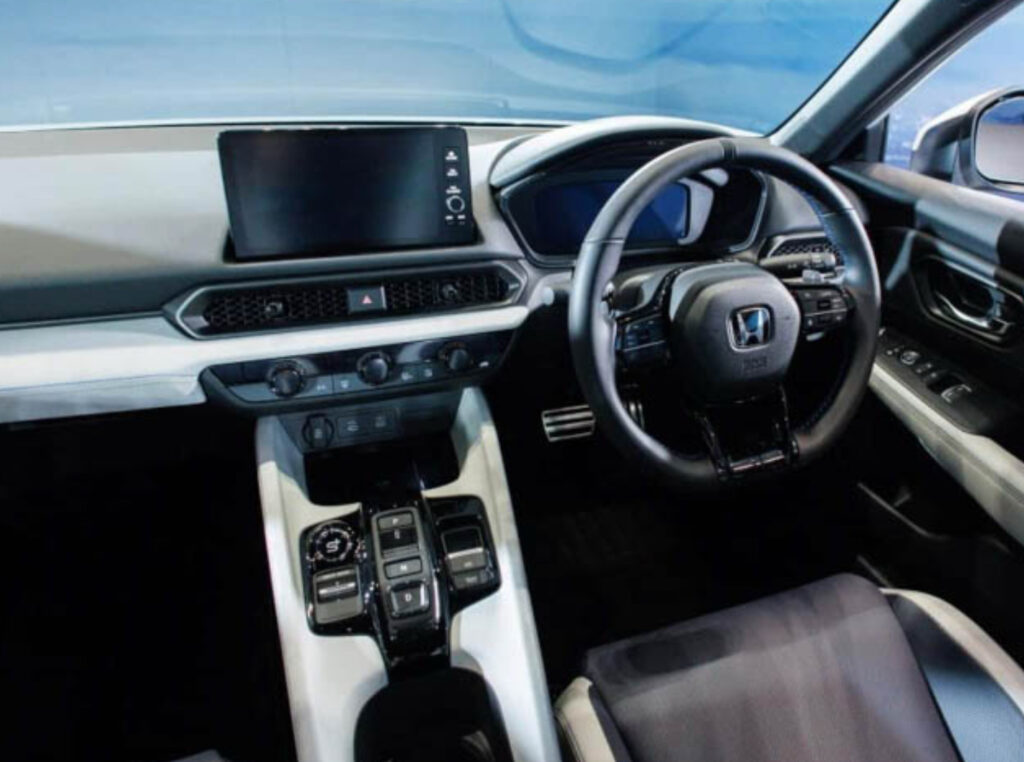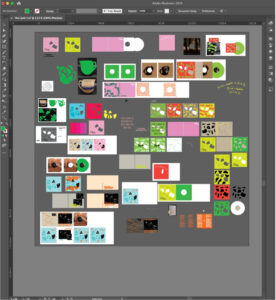In the high-octane world of automotive design, few names carry the weight of Honda when it comes to merging everyday usability with exhilarating performance. After years of speculation and fan anticipation, Honda has officially lifted the curtain on the interior of its upcoming sports car — the 2026 Prelude.
This reveal marks the return of a legendary nameplate, and with it, a new chapter in Honda’s performance legacy. The spotlight, this time, is on the sophisticated and cutting-edge cockpit that signals both a nod to its racing roots and a commitment to the future of driving.
A Name Reborn: The Return of the Prelude
Before diving into the cockpit itself, it’s important to understand the legacy the new Prelude is tapping into. Originally introduced in 1978, the Honda Prelude was conceived as a sportier, more luxurious offering within Honda’s growing portfolio. Across five generations, the Prelude consistently blended athletic driving characteristics with everyday comfort, cultivating a devoted fanbase before being discontinued in 2001.
The resurrection of the Prelude nameplate is more than nostalgic marketing — it’s an intentional act. Honda understands the emotional pull of heritage, and by reviving the Prelude, the brand is making a statement: that sporty driving experiences still matter in the era of electrification and autonomous technology.
The Big Reveal: A Cockpit with Purpose
The most striking element of the 2026 Prelude’s latest reveal is undoubtedly the interior. While automakers frequently lean toward minimalism or aggressive futurism in their cockpit designs, Honda walks a deliberate middle path here — striking a balance between modern tech and tactile engagement.
At the core of the cabin is a layout that blends inspiration from two distinct sources: the Civic Type R and the premium Acura Integra. The result is a space that feels instantly familiar yet entirely new.
Driver-Centric Design
The 2026 Prelude’s cockpit doesn’t just house technology; it centers around the driver. The driving position has been meticulously engineered for ergonomic excellence. Low-slung, bolstered seats hug the driver without restricting movement, evoking the cockpit of a track-ready machine. The leather-trimmed steering wheel is chunky and purposeful, with tactile buttons intuitively placed to avoid distraction.
Behind the wheel, drivers are greeted by a fully digital instrument cluster. While this is not novel in 2025, Honda has gone to lengths to ensure it doesn’t overwhelm with information. Clear, legible readouts prioritize revs, speed, and hybrid system behavior. Customization options allow the driver to choose how much (or how little) data they want visible, a nod to both seasoned enthusiasts and everyday users.
“S+ Shift” Mode: Reclaiming Engagement
One of the most talked-about features of the new cockpit is the “S+ Shift” mode — a button placed prominently on the new, elevated center console in place of a traditional gear selector. With the Prelude going hybrid and foregoing a manual transmission, Honda knew it had to offer an engaging alternative.
The S+ Shift mode simulates gear changes with remarkable finesse. The system adjusts torque delivery and sound feedback to mimic the visceral feel of a conventional gearbox. While purists may scoff at anything artificial, early test impressions suggest that it delivers a surprisingly satisfying experience — downshifts come with a burble, and acceleration is punctuated by the kind of audio cues that stir the soul.
This system doesn’t attempt to replace the tactile joy of a manual, but instead reimagines what engagement looks like in a hybrid era.
A Hybrid Heart with Performance Intent
Underneath the futuristic interior lies a powertrain that blends efficiency with sportiness. The 2026 Prelude features a 2.0-liter inline-four engine paired with dual electric motors — a setup that borrows heavily from Honda’s Formula 1 hybrid technologies and its experience with the Accord Hybrid.
The result is a front-wheel-drive layout that offers a harmonious blend of instant electric torque and high-revving gasoline drama. Honda hasn’t yet published official performance figures, but insiders suggest a 0–60 mph time in the low 5-second range — more than respectable for a car aiming to be an everyday sports coupe.
Notably, the hybrid system is self-charging, removing the need for external plugs and emphasizing convenience without sacrificing performance potential. This ensures the Prelude remains accessible for the enthusiast who wants a thrilling car without the complications of EV infrastructure.
Material Choices and Ambient Design
Beyond just the technical innovations, Honda has taken steps to elevate the tactile experience inside the Prelude. Soft-touch materials wrap the dashboard, door panels, and center console, while brushed aluminum accents hint at performance without becoming garish. Optional suede inserts and contrast stitching elevate the experience even further.
Ambient lighting runs subtly along the dashboard and footwells, offering drivers customizable hues that shift based on driving mode. In comfort mode, soft blues dominate, while sport mode bathes the interior in energetic reds. It’s not just for aesthetics — lighting helps reinforce the mood and behavior of the car.
The Passenger Experience: Performance Meets Comfort
While the driver is undeniably the focus, Honda has not forgotten about the passenger. Interestingly, the two front seats are not identical. The driver’s seat features firmer bolstering and a snug fit designed to hold the body in place under lateral G-forces. The passenger seat, on the other hand, leans toward plush comfort, with softer cushioning and a broader base.
This subtle asymmetry signals a deeper truth about the Prelude: it’s a performance car, but not at the expense of daily livability. Whether it’s a spirited weekend drive or a long weekday commute, Honda wants both occupants to arrive refreshed and satisfied.
Rear seat space is, predictably, limited — this is a 2+2 configuration more suitable for short trips or smaller passengers. Still, the folding rear seats offer practicality for those who might use the car as a daily driver, adding a layer of utility absent from many coupes in this category.
Infotainment and Connectivity
The Prelude’s floating infotainment display — a 10.2-inch touchscreen mounted centrally on the dash — is another point of crossover with the Civic and Integra. It runs the latest Honda infotainment system with support for wireless Apple CarPlay and Android Auto, integrated navigation, and voice control.
Unlike some competitors who bury essential functions behind layers of menus, Honda maintains physical controls for volume, climate, and drive modes — a decision many drivers will appreciate in the name of usability.
A 12-speaker Bose premium sound system is available on higher trims, optimized for the unique acoustics of the coupe’s cabin. Combined with excellent cabin insulation, it ensures that music and media remain crisp and immersive — whether cruising on the highway or sitting in traffic.
Safety Meets Sport
While the Prelude is unabashedly a sports car, it arrives with a full suite of Honda Sensing safety technologies. Adaptive cruise control, lane-keeping assist, blind spot monitoring, and traffic jam assist are all standard, ensuring that the car is not only fun but safe in the modern commuting world.
Cameras and sensors are seamlessly integrated into the design, avoiding the common pitfall of making high-tech cars look cluttered or overly robotic. The goal, according to Honda’s design team, was to let the tech disappear into the background — active when needed, invisible otherwise.
A Design Language That Speaks Volumes
From the outside, the 2026 Prelude makes a strong impression. The cockpit sits low within a sculpted silhouette that blends aerodynamic sharpness with muscular curves. The front fascia is aggressive, with narrow LED headlights and a wide grille flanked by functional air intakes.
The sloping roofline and long hood evoke the spirit of rear-wheel-drive grand tourers, even as the Prelude sticks with a front-drive layout. Honda has clearly invested in visual drama — this is a car designed to turn heads even when standing still.
Market Position and Availability
The new Prelude enters a market that has changed significantly since the early 2000s. The coupe segment is shrinking, with many automakers abandoning it altogether. Honda’s decision to re-enter the space signals a belief that there’s still a market for driver-focused vehicles that blend affordability, practicality, and style.
With an expected base price in the mid-$30,000 range and top trims approaching $45,000, the Prelude undercuts most European competitors while offering more technology and hybrid efficiency. It slots neatly between the Civic Type R and the Acura Integra Type S, offering a bridge for buyers seeking comfort, luxury, and speed in one cohesive package.
The car will begin deliveries in Japan and Europe first, followed by a North American launch later in 2025. Honda has not yet confirmed exact trim levels, but insiders suggest three primary configurations: Base, Sport Touring, and an optional Type R variant for the future.
A Prelude to a New Era
In reviving the Prelude, Honda isn’t just bringing back a name — it’s rekindling the idea that a sports car can be thrilling, comfortable, and environmentally responsible. The interior reveal underscores this philosophy with a cockpit that is modern, intuitive, and unabashedly driver-focused.
As electrification transforms the automotive world, cars like the Prelude remind us that innovation doesn’t mean abandoning emotion. If this is the future of performance — responsive, beautiful, and smart — then enthusiasts have every reason to celebrate.
Because sometimes, a great drive starts not with horsepower, but with the place you sit.
No comments yet.








